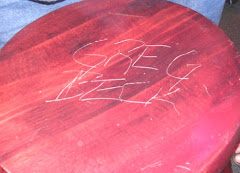Model Rocketry On Steroids

"SnapShot™
Snap fantastic aerial photos from 500 feet (152 m) high when you launch the Estes SnapShot! This RTF (Ready to Fly) rocket and camera comes from the factory fully assembled and ready to launch. The Kodak 110 color print photos are taken during the ejection stage of the flight, meaning you'll literally get sky-high photos of the park, your house or other great locations! After it safely lands using a 12 inch (30 cm) pre-assembled parachute, you can get your film developed. Be prepared to be amazed at the aerial view of your launch site!"
It probably won't surprise anyone to learn that a geeky space nerd like me built and flew model rockets when I was a kid.
For those of you unfamiliar with the hobby, here is a very brief (by my verbose standards) primer.
You have a cardboard tube with a plastic nosecone and plastic fins. The nosecone and the cardboard tube are connected by a rubber band (shock cord). Attached to the base of the nosecone is a parachute.
As shown in the diagram above, there is some fireproof "recovery wadding" that sits atop the rocket engine in the cardboard tube.
The rocket engine is solid propellant and they come in various sizes and thrusts. They are cylindrical cartridges with funnel-shaped bottoms. Much like some of my ex-girlfriends. But that's another story.
The rocket is launched via a metal igniter that looks like "bobby pin" inserted into the base of the rocket motor and attached by two wires to a battery powered launch controller.
When the controller is armed and the ignition switch is flipped, a current runs down the cord to the igniter, which lights the motor.
The motor burns from the bottom up until the rocket reaches its maximum height. The last thing the rocket motor does before burning out completely, is to set off that small explosive charge at the top.
This propels the recovery wadding towards the nosecone, ejecting it from the cardboard tube, trailing the attached parachute.
Since the nosecone is attached to the rocket body by a rubber band, the entire assembley floats back to the ground to be recovered, reassembled, and launched another day.
It generally goes something like this.
Dylan's model rocket
But check out this guy.
He built a 1/10th scale, 1/10th thrust model of the most powerful rocket in the world, the Saturn V.
Here is the actual launch.
Amazing! I love the way it lands upright, on it's tail fins! Absolutely incredible!
Here is a video of the real thing. Apollo 11 lifting off to send the very first humans to ever set foot on the moon.
The white chunks you see falling are pieces of ice. The Saturn V was fueled by liquid oxygen and liquid hydrogen. The only way to get gases like oxygen and hydrogen to become liquid is to get them really, really cold. Whatever containeryou have them in (the rocket) will tend to form ice on the outside from moisture condensation.
Amazing stuff.
Then the first stage burns out and the second stage ignites in a HUGE display!
This, people, is the "Rocket Science" you have heard so much about.
































No comments:
Post a Comment